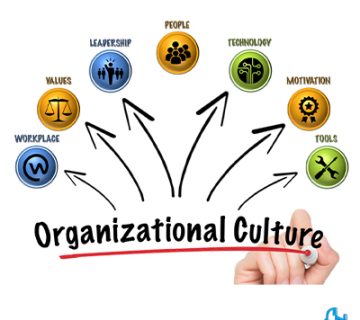
The corona virus can be the promise of a huge reconstruction
What CEOs of the 2020s can learn from business leaders of the 1940s as they face Covid-19.
Over the past two weeks, we’ve been sharing stories from CEOs and founders on how they’re navigating and leading during the coronavirus crisis. Most leaders remain steadfastly in protection mode, striving to ensure the safety of their people and the continuity of their activities. Their management teams are scattered around the world and their employees worry about their job security. Their supply chain has been cut. Their call centers in Asia are out of reach as workers are forced to stay at home without laptops, broadband or phones. At the same time, their employees are trying to teach their children school lessons at home or protect families and grandparents from the Covid-19 virus. They face a huge uncertainty: They don’t know how quickly things will improve or what the world will be like when we get out of the pandemic.
Leaders of the 1940s
American CEOs of the 1940s faced a similar situation at the start of World War II: Loss of customers (due to rationing and shutdowns), loss of employees (who were sent to war), and loss of suppliers and distributors (who were confiscated by the government). Their management teams and workforce were anxious. No one knew when life and business would return to “pre-war” conditions (while the country was in its twelfth year of the Great Depression). No one knew when the war would end or what world would emerge.
But World War II was also a time of great changes: General Motors converted almost 90% of its divisions into divisions for the production of war equipment. Hershey’s products switched from candy to D rations (chocolate bars that were emergency rations for army soldiers) and increased production from 700,000 chocolate bars to 24 million per week. Before the war, it took 200,000 hours to build an airplane, which Ford eventually reduced to 18,000 hours. The military asked Coca-Cola to open 10 bottling plants overseas to serve American troops – the organization’s leadership team responded to GI by opening 64 bottling plants and supplying 5 billion bottles of Coke. The number of women working in the defense industry rose from about 80,000 at the end of the war to over 3 million in June 1942.
Reconstruction
It was a period of “reconstruction” – when entire US industries derailed to reconfigure their businesses and respond to a new reality. As a result, many of these companies emerged stronger and dominant in global industries after the war, and those that could not adapt to the existing conditions were pushed out of the scene.
Why are we talking about WWII? While the coronavirus crisis may not be as big as a world war, the opportunity for business disruption in this period is just as great.
Pandemic weaknesses:
Few companies were ready. As a result, the boards of directors must express their meaning of “crisis preparedness” everywhere. In the meantime, organizations are fighting to stay connected and trying to prove their worth to anxious and patronizing customers.
Many CEOs understand that we are entering a “great upheaval,” when they have the right and duty to question everything they know about business. Innovative options that help them serve customers during the current crisis can fundamentally redefine the future of the company. They can equip themselves to survive and thrive in the turbulent world ahead—not to be disrupted by climate change, globalization, technology, and more.
There are many opportunities for innovation:
CEOs must rethink the company’s marketing trends because channel supply partners either adapt quickly or fail quickly. They need to change their supply chain because critical components of the chain may be out of order and the chain may be interrupted. They should rebuild their service and customer support centers abroad. They have to reconsider the ways of working in the new virtual world. They should review all expenses.
Of course, there are limitations in the process of imitating neosamani. With a few exceptions — including new ones in the production of ventilators, protective equipment and disinfectants — few companies are retooling to fight the virus. But current CEOs can still learn a few lessons from their wartime counterparts: Have the courage to challenge everything; Energize your staff around a big idea to reimagine the company, its assets, employees and constraints, and prepare yourself to meet the changing needs of customers emerging from this crisis.
Focus on one strong idea
American historian, David M. Kennedy, in one of his great speeches about World War II, described the “change” as follows: If a word best describes the state of this society during the depression of the 30s is “interruption”, the best description for what happened after December 7, 1941, the attack on Pearl Harbor, is “movement”.
These things did not happen all at once, but the companies that prospered through the war and after the war were the ones that moved quickly. In their rapid innovation, they fully embraced the ideas of mass production and a global mindset
Four decades earlier than Ford was proving the benefits of mass production with the Model A and Model T, Rockefeller saw the benefits of a global mindset in shaping the oil industry to his liking.
No business idea was new: Four decades earlier, when Ford was proving the benefits of mass production with the Model A and Model T, Rockefeller saw the benefits of a global mindset in shaping the oil industry to his will. Wartime innovation taught a whole generation of business leaders how to apply and implement these ideas on a different scale. Arthur Herman, author of the book “Istiqlal Forge” “How American Business Won World War II,” explains how companies were retooled to build airplanes and writes: “The process of mass production of war tools was no different from the process of mass production of other things. Once you’ve broken that process down into as many interchangeable steps as possible and arranged them to form a continuous assembly line, you can make as much, as fast, and as quickly as you ever needed to. Produce what everyone asked for. In all this time, the more you reduce the costs, the more you produce. “Assembly line technology supports a new global way of thinking. In turn, the new global mindset expanded the use of this technology.
When leaders adopt a more global mindset, anything is possible. Consider the leaders of Coca-Cola. During the war, the CEO, Robert Woodruff, ordered that “every man in uniform, wherever he may be, at whatever cost to the company, will get 5-cent bottles of Coca-Cola to the customer.”
This wartime ambition—their big new idea—made a truly iconic brand that would later evolve into a postwar company with a global footprint and mindset.
Leaders of 2020
The CEOs of 2020 live in a digital reality – one of the virtual activities is to find exemption from constant presence in the organization and use new channels to reach and mobilize employees. In a crisis, they create entrepreneurial teams at the local level to solve local problems. They are rebuilding the core of the organization so that it can serve these teams as a platform with standard support. Digital technology makes this new mindset possible and the new mindset will increase the use of digital technology for us.
The goal of a company has always been to manage three major conflicts and create a balance between them for the benefit of customers: Customer count vs. customer intimacy, normal flow vs. disruption, and short-term vs. long-term planning. CEOs are reinventing their companies to digitally manage these conflicts. Leaders know that their companies survive or die based on the speed at which they adapt to new technologies and new mindsets.
During World War II, the doors to all sectors of the U.S. economy opened to women and minorities within months—overcoming dozens of barriers. As the United States agrees to close schools amid the pandemic, we’re seeing a widespread trend toward online teaching — overcoming dozens of debates among academics. A crisis causes rapid change. CEOs now have little time to make tough decisions that their teams would normally sit and discuss for years.
There are bold and transformative ideas that have been hanging around your company for some time now. Find the moment, focus on the most powerful idea, and make the change now.
You can start with a few questions:
- How can you change the role of your organization to make the most of digital platforms during quarantine?
- How can we reach our consumers faster and better? How can we partner with those who guarantee access to the fastest route from factory to home (customer)?
- How can we create an image of our company as a team that can be mobilized to achieve our highest priorities? How do we prevent our resources from being trapped in silos or locked into annual planning cycles?
- How can we combine the best of our global and multi-location resources so that our local customers are never out of stock?
Rethink your assets and think beyond traditional organizational boundaries
The revolution of the 1940s required CEOs to reconsider the natural boundaries of their organizations. Since archives became key partners, the dynamics of competition changed. Suppliers became consumers. Market trends changed overnight. The government became a big customer and private-public partnerships became the key to survival.
Business leaders today act similarly. They work with key competitors to secure supply and negotiate with local government. They are forming new alliances. They reconsider what is inside and outside the organization. They are rethinking the concept of the “essential employee” to remember how much their business depends on the people who make and sell products, deliver them to customers, and answer customer calls. Are companies outsourcing these critical roles again? They remember that smart leaders thrive only if they have great employees.
In the 1940s, companies not only redefined their boundaries or cooperated in partnerships during the war, but the consequences of this period reverberated beyond these. Immediately after the end of World War II, the role of government changed dramatically in certain markets. It created opportunities and destroyed opportunities for companies and industries at the same time. In England, the National Health Service was created. World governments sought a common alliance, so they created the United Nations. The United States approved the Marshall Plan to provide aid to Western Europe. In the following decades we saw a high volume of peace and reconciliation between allies and allies. The Cold War and the strategy of containment shook up the unions again and involved Western-leaning nations and communist-leaning nations in a 45-year conflict. Corporations with their new global mindset were forced to navigate this change of direction.
What will happen now? Are America and China getting further apart or closer together? If they are separated, will MNCs still operate as a single company with the same set of values in both markets? Perhaps global CEOs need to consider how their company boundaries are defined. Consider coordinating with the new state borders.
We may not know what citizens will demand or what governments will do in the face of a global pandemic, but we do know that companies going forward will measure their future by the strength of their partnerships, not their assets. CEOs who think beyond the boundaries of today will be well placed and equipped for a new tomorrow.
Prepare for two different types of customers and multiple scenarios.
By shifting the war to 1945, the end of the war could be seen. The world was undergoing huge changes in the years of hardship and scarcity. Some changes simply accelerated the process: After decades of fighting for their rights, women entered the fields of economy and politics. Some changes were reversed: America embraced the mindset of becoming more global.
Businesses across the United States debated the nature of wartime consumerism. Do customers behave like this? Do they despair of returning to the way they lived before the war? Or maybe they have completely changed and the war has changed them forever?
Some companies bet they would return to pre-war trends. The Packrad Company, an automobile manufacturer, assumed that consumers emerging after the war would still want the early cars of the 1930s. They bet on a quick return to the original state and lost. Ray-Ban, on the other hand, bet that these emerging consumers would want to emulate the look of aviation heroes and returning pilots, and they won.
At the time, no one could have predicted that wartime consumers would see an unsustainable lull because almost all CEOs underestimated how much the war could change the American consumer. Returning soldiers, supported by government programs like the GI Bill, became fathers of baby boomers (after World War II there was a population explosion from 1946 to 1964), and their wives, empowered by Rosie and the Riveter, became mothers. They were disguised. They rushed to the suburbs, bought houses and cars and were filled with the American Dream. The post-war consumer considered spending for the country as his patriotic duty. It was an American who embraced the new and advanced.
We don’t know if we should assume that yesterday’s buyer will return as your best customer or if we should expect a permanent customer shift after the pandemic. But we should consider the restructuring and equipping after the war as a warning for now: Do not underestimate the change of customers after a deep crisis. In an indefinite quarantine, families teach each other to survive and thrive in a digital world. Grandparents play online games with their grandchildren. Parents and children gather together and talk behind the phone screens with their friends and classmates who are somewhere else. Worried mothers and fathers buy from online stores that have a large amount of stock instead of worrying about the lack of stock in traditional stores.
In this unusual situation, leaders should not assume anything. Future consumers will surely return to the original categories and forever change their relationships with others. But where does your business fall? Prepare for returning buyers and forever-changed consumers. Conduct new consumer research, try new messages and propositions. Make sure you’re prepared for multiple scenarios. It’s been twenty-something years since the government defined “essential workers” and it’s surprising that their current jobs were never “essential” (and we see they can be eliminated under current circumstances. )!
Of course, war efforts at that time were not considered revolutionary. CEOs didn’t suddenly wake up and decide to build airplanes, hire women as a workforce, adopt a global mindset, and prepare to serve a new generation of consumers. They fought to survive because the war prevented them from serving customers and confiscated their labor force. In the beginning, there was chaos, and then, in fits and starts, CEOs began to reorganize their companies, and in the end, they were restored. Before CEOs learned to eliminate chaos, they learned to manage chaos.
This is perhaps the most important lesson wartime CEOs can teach today’s leaders. As you move from hedging to initial recovery and then to massive volatility, you are in uncertainty. You run a series of scenarios, building a team that adapts to events along the way. This adaptive team is the team you use to adapt and grow in the new world that is emerging. Maybe after the end of the crisis, you need to serve the same customer that returned to the previous conditions, but you don’t need to allow your organization to return to the same way it was serving before the crisis (the ability to provide service to old customers while implementing the strategy new ones).
Three words are useful here: Predictability, adaptability and flexibility.
Covid-19 has shown weakness in all these three areas. In managing chaos, we must build the capacity to anticipate change, adapt quickly when we go right and when we go wrong, and make sure our business is resilient to the shocks that will inevitably occur over decades. Uncertainty enters it, it is resilient.
Surely we will be better off after this opportunity to stop, to play with the kids, to connect with friends online, and to ask what really matters. The world is not at war. But customers will always remember who came to their aid when they were squatting in their homes and finally enabled them to come out of this crisis. They will be different and they will expect you to be different. Your employees will be watching you in the real moments when you move from protection to recovery. They want reassurance and inspiration. These moments are your moment.






No views